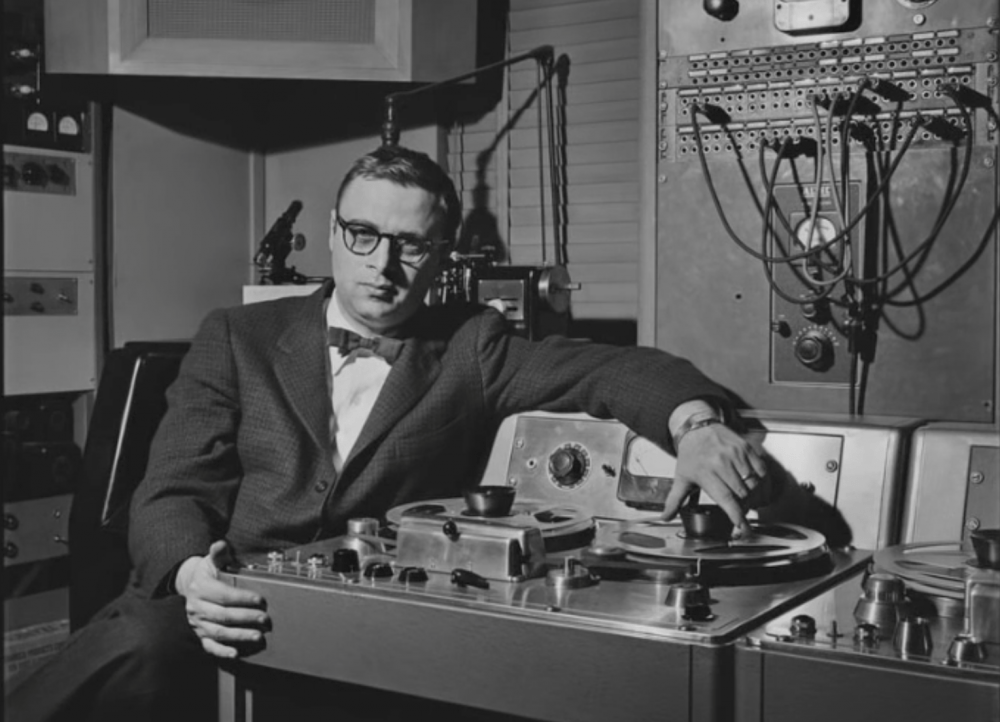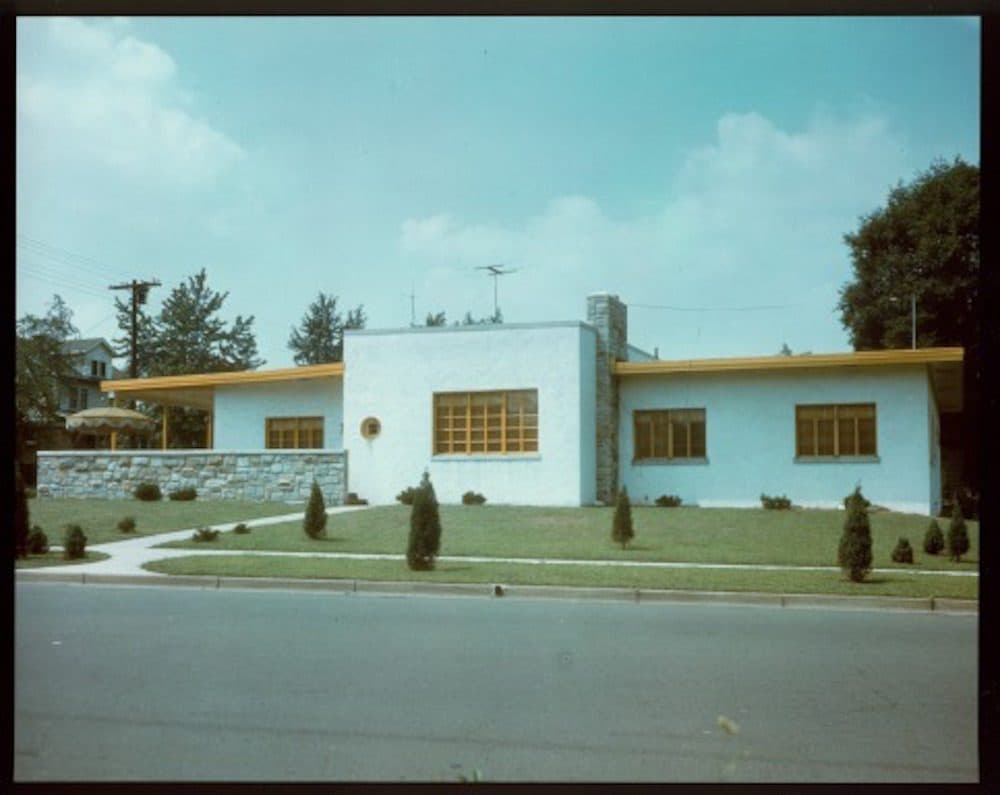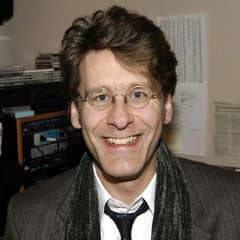Advertisement
Rudy Van Gelder Heard The Sound Of The Future In The Music Of His Time

Jazz, the only truly American art form, is first and foremost an improvisational medium. The very idea of producing a jazz recording with any agenda beyond taking an accurate audio snapshot might seem a waste of time and effort to musicians who pride themselves on never repeating a phrase from one performance to the next, in a constant search for new interpretations of the repertoire.
Yet jazz was among the first music to be electrically recorded, and quickly became a specialty among audio engineers. Several of those sustained long and illustrious careers, but only one of them approached celebrity: Rudy Van Gelder, who died Friday at the age of 91.
Beginning in 1953 Van Gelder recorded the lion's share of the most revered jazz musicians of the time, including Miles Davis, Thelonious Monk, John Coltrane, Sonny Rollins and Art Blakey. Pun intended, for the signature “Van Gelder,” aka “Blue Note,” sound arose from Van Gelder’s work with Alfred Lion, co-founder of Blue Note Records (though Van Gelder worked for other independent labels such as Prestige and Savoy.) A non-technical producer, Lion insisted that his records stand out in the crowded postwar jazz market, and Van Gelder delivered. Once you've heard the "Van Gelder/Blue Note sound" (and you have) you know it — the indelible sound of a particular period of our history.
But some superior recordings of the very same musicians Van Gelder was fortunate enough to work with, were made earlier by someone named Doug Hawkins at WOR radio studios at 1440 Broadway in New York City.
Later in the decade, what are to my ears the finest sounding jazz records of the time were made by one Roy DuNann, in a studio he fashioned in the shipping room of Contemporary Records on Melrose Ave in LA.
Does anyone remember these men?
Sound And Vision
An optometrist by day, Rudy Van Gelder was a jazz buff who started out cutting records of local musicians in northern New Jersey while still in school. From an early age he had been a ham radio enthusiast, and he became an inveterate “hi-fi” tinkerer always striving to get the sound he wanted to hear from whatever audio equipment he had, including the revolutionary new magnetic tape recorders. His parents considerably aided his efforts by adding a double-pane interior window to one of the bedrooms in a house they built in Hackensack in 1946, just as one would find in a professional recording studio.

That wonderful mid-century modern Hackensack house is long gone now; it's a shame that it wasn't enshrined. Unlike a proper recording studio with union rules in place, and the red light and clock on the wall, the Van Gelder home was a setting for less formal, more relaxed music-making (not counting a Prestige session with Miles Davis and Thelonious Monk that almost ended in fisticuffs.)
In a session Van Gelder would curb his tinkerer’s penchant for tweaking the gear, focusing instead on working fast to keep up with the musicians -- and to accommodate the shoestring budgets of the indie labels who were paying him. Hackensack quickly became a familiar, comfortable destination for musicians and producers who were happy to get away from the city and its distractions and depredations. It's amazing to realize that what was almost unique in the '50s is pretty much the norm in today's music world of home studio recording.
Sound Chasing
But the Hackensack house was far from ideal for recording the way it was generally done then. While its high, cantilevered ceilings helped, the living room just wasn't big enough to give the kind of depth to a recording that the purpose-built studios were beginning to get. To avoid the characteristic claustrophobic boxy sound of multiple microphones in relatively small untreated rooms with parallel walls, Van Gelder began to place his mics in an unorthodox fashion. Most engineers of the time would consider it way too close. This could, and sometimes did, lead to overload and distortion all the way down the audio chain from the mic to the record itself.
Van Gelder would alter the sounds of the individual instruments -- and the entire recording -- with compression, equalization and reverberation both as they were being recorded, and after. He became a relentless sound chaser. Musically, Van Gelder steered clear of the performers (he'd fooled around on the trumpet as a kid,) but outside the sessions he would work long and hard with individuals who wanted to perfect their recorded sound.
The results were unlike any other recordings, even those of the same ensembles made in other studios. For one thing, Van Gelder cut hotter masters than anyone else, presaging today's “loudness wars” where the goal is to squeeze out every last bit of dynamic range and maximize output. For purposes of radio broadcast, this practice made no more sense then than it does today, but Van Gelder and Lion wanted Blue Note records to play louder on the jukeboxes where the music was largely heard.
Sound Off
Many musicians loved Van Gelder’s Blue Note sound; some (notably Charles Mingus) hated it. You'll find plaudits aplenty in this week's media from musicians, critics and music lovers. But here's just one skeptic, noted -- and controversial -- mastering engineer Steve Hoffman, with his own more technical description of the “Van Gelder sound” (from his own forum post at stevehoffman.tv):
Take three or four expensive German mics with a blistering top end boost, put them real close to the instruments, add some extra distortion from a cheap overloading mic preamp through an Army Surplus radio console, put some crappy plate reverb on it, and record. Then, immediately (and for no good reason), redub the master onto a Magnatone tape deck at +6, compress the crap out of it while adding 5 db at 5000 cycles to everything. That’s the Van Gelder sound to me.
Hoffman's not alone in his sentiment. For many of us in the recording trade, Van Gelder might be the most overrated engineer in audio history. But for me, the so-called "Blue Note sound" has always been a musical, rather than audio, innovation, and Van Gelder less a peerless technician than a sonic visionary.
Sound Principle
To expand on Hoffman's comments, I would add that Van Gelder (while in Hackensack) generally used two mics (or three) on the drums, so he couldn't really screw that up too much. The bassists were often playing through amplified speakers which he miked, so he didn't need to fuss with “properly” recording the bass acoustically (something I've fussed with for decades.) These were common practices of the time, and so are the least remarkable aspect of his classic recordings.
More interestingly, in the '50s Van Gelder couldn't or wouldn't record a piano "properly" to save his life. With much the same gleeful and wanton disregard for the potentially brain-hemorrhage-inducing consequences of sticking a German large-diaphragm condenser mic (made for recording orchestras from several meters away) one inch in front a trumpet, he'd stuff a cloth-wrapped mic in one of the sound holes in the piano's harp. And that's what Van Gelder's '50s pianos sound like -- as though you'd crawled under the piano with stoppers in your ears (which is why I shed a tear listening to the fantastic piano solos on his recordings, wishing I could've had a crack at capturing them.) The distant bass and muffled piano contrast sharply with the sizzling cymbals and the crispy "up-in-your-grille" horns, giving the "Blue Note sound" its curious chiaroscuro.
Many of us may be found making far more deprecatory comments about, say, the late great English engineer/producer Joe Meek (the U.K.'s version of Phil Spector) with his own unique brand of lo-fi, distressed and insanely compressed parlor rock recordings in the early '60s.
But many of us are also missing something essential about audio recording for people without dog's ears: human ears don't want “clean” sound. Rather, we’re drawn to harmonic distortion. People don't really want realism or even accuracy; we prefer "larger-than-life." That's what Van Gelder gave the world, to the best of his ability and equipment: the biggest, hottest sound he could form. Like his pioneering home studio setup, that passion for “larger-than-life” sounds among both listeners and music-makers is truly the state-of-the-art today.
As an example, consider that ne plus ultra of mid-century modern sounds:
Miles Davis' Harmon-muted trumpet. A sound that transcends reality and the limits of quantum physics, it’s like having the same fly in both ear canals at once (I'm channeling the late English poet and jazz critic Philip Larkin here!)
Rudy Van Gelder created that uncanny sound on tape, and when Miles moved on to Columbia Records he insisted that the elite, erudite professional engineers there re-create it — over their dead bodies. As we now know, they not only chose life, but perfected that sound and went on at Miles' behest to commit even greater audio travesties, like recording that same trumpet through a guitar player's wah-wah pedal and amplifier.
Sound Strategy
Incidentally, the immediate and widespread aping of the "Van Gelder sound" caused Van Gelder to begin his lifelong practice of camouflage, for example, painstakingly transplanting his Schoeps microphones (the Swiss watch of mics) into Shure (the Timex of mics) housings, so no one would know what he was using.
He similarly disguised his control room gear, and at the purpose-built studio he constructed in Englewood Cliffs, New Jersey, in 1959 (after he finally gave up his optometry practice) he always made producers – whose presence in general he merely tolerated – sit at a "producers' desk," where there was a reduced risk of glimpsing how the sausage was being made.
A friend who's led a jazz ensemble for 35 years (I engineered and co-produced their first two albums) confirmed some of the details above from his own late-'80s album sessions in the Englewood Cliffs studio. By that time Van Gelder had for years been turning out multitrack recordings basically indistinguishable from those of other top-shelf studios; the “Van Gelder/Blue Note sound” of the '50s was apparently past its shelf life.
But what was disappointing to my friend, he told me, was that Van Gelder didn't seem interested in giving any musical opinions whatsoever, even when directly asked. After the last session's end, when the last musician had packed up and the last check written, all Van Gelder could muster was, "Well, I guess that went OK."
Sound Of The Century
Thanks to the incredible musicianship and musical zeitgeist of the postwar years -- and in part thanks to Rudy Van Gelder -- the greatest small musical ensemble concept since the string quartet is still the standard issue jazz unit today: two (or three) horns, mostly in unison or octave unison with a three-piece rhythm section, playing off the “hard bop” style (a post-Charlie Parker, bluesy, funky, somewhat slower bebop.)
So, we should honor Rudy Van Gelder perhaps not so much as a wise and knowledgeable wizard, but as a sort of nerdy jazz fan turned “hi-fi” anorak who found a way to stop time and translate a charismatic performer's extemporaneous expressions into a sort of anodyne audio duende recognizable to anyone. He heard and noticed things nobody else seemed to, and then, improbably, found a way to capture and extend those musical artifacts into what was then (it's hard to believe nowadays) a mass-market audience in the postwar jazz decades, and create the sound of an era.









